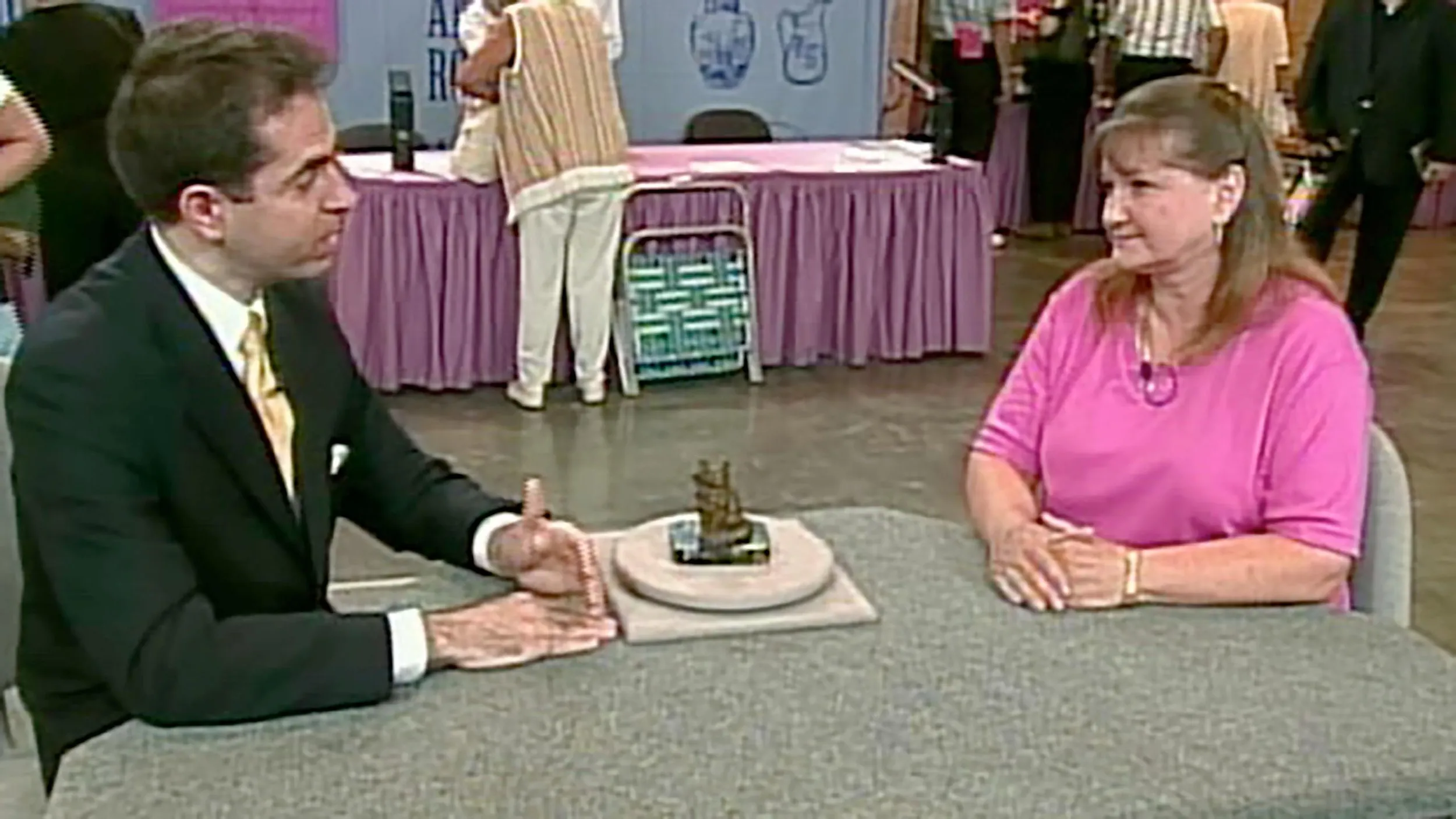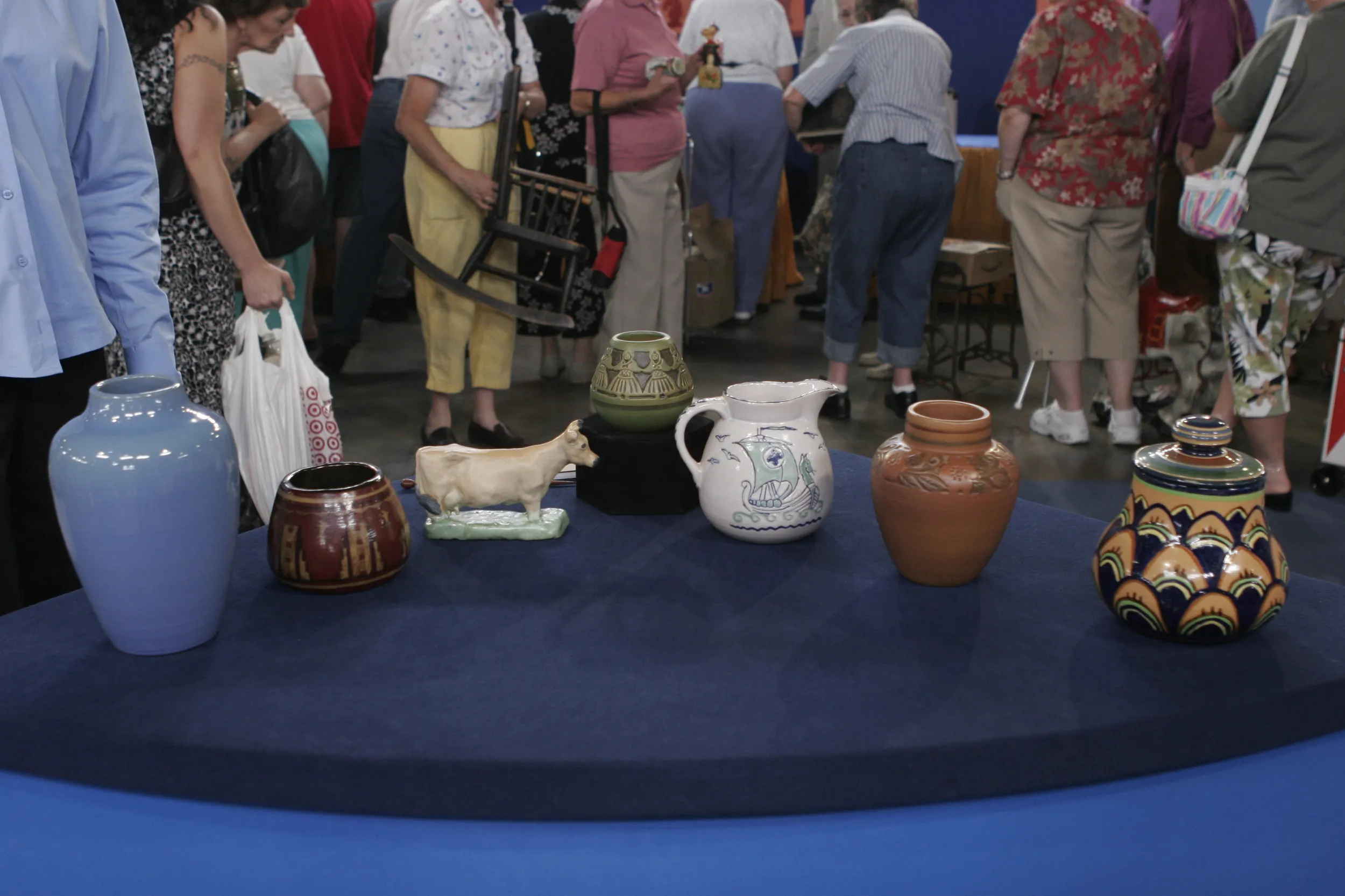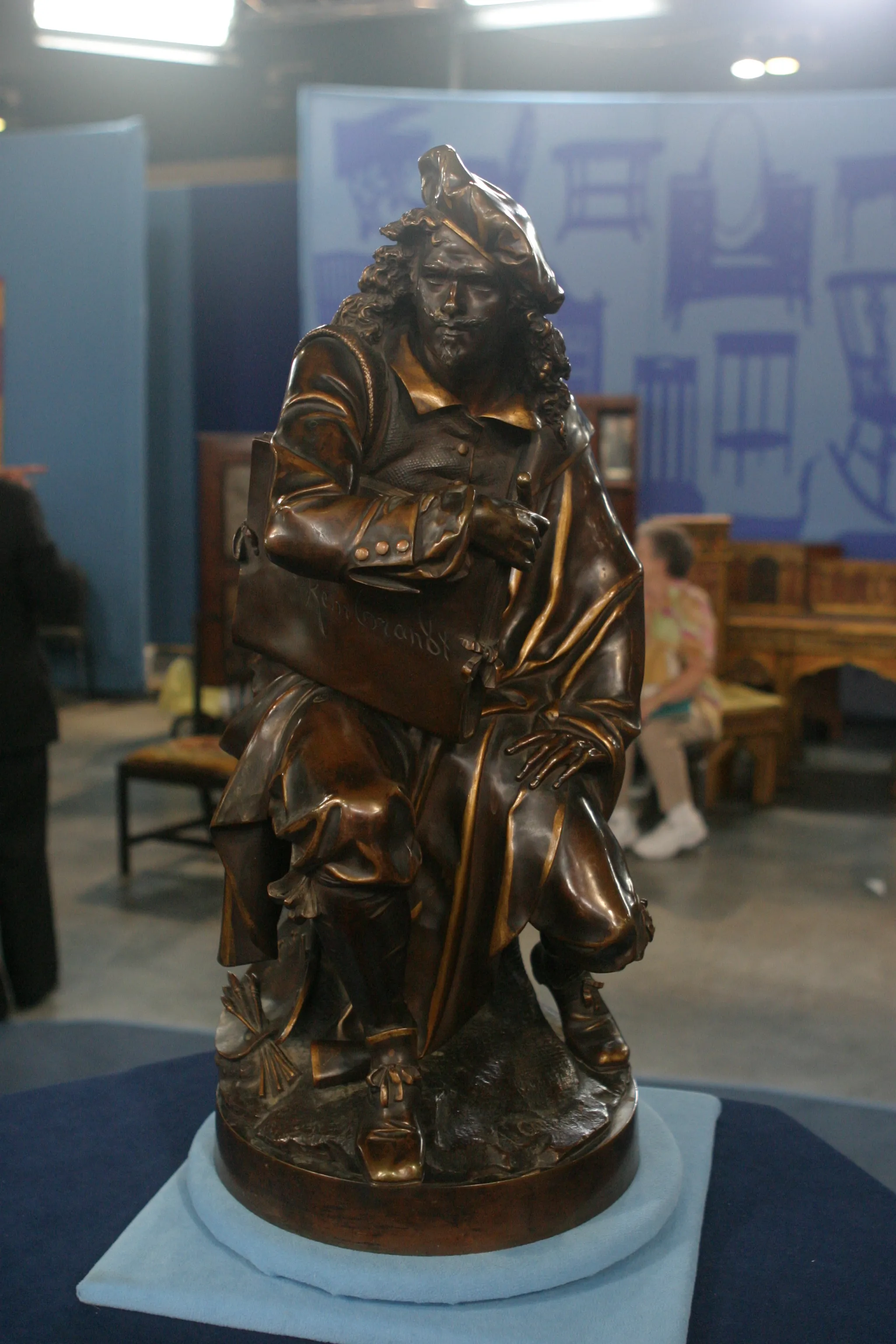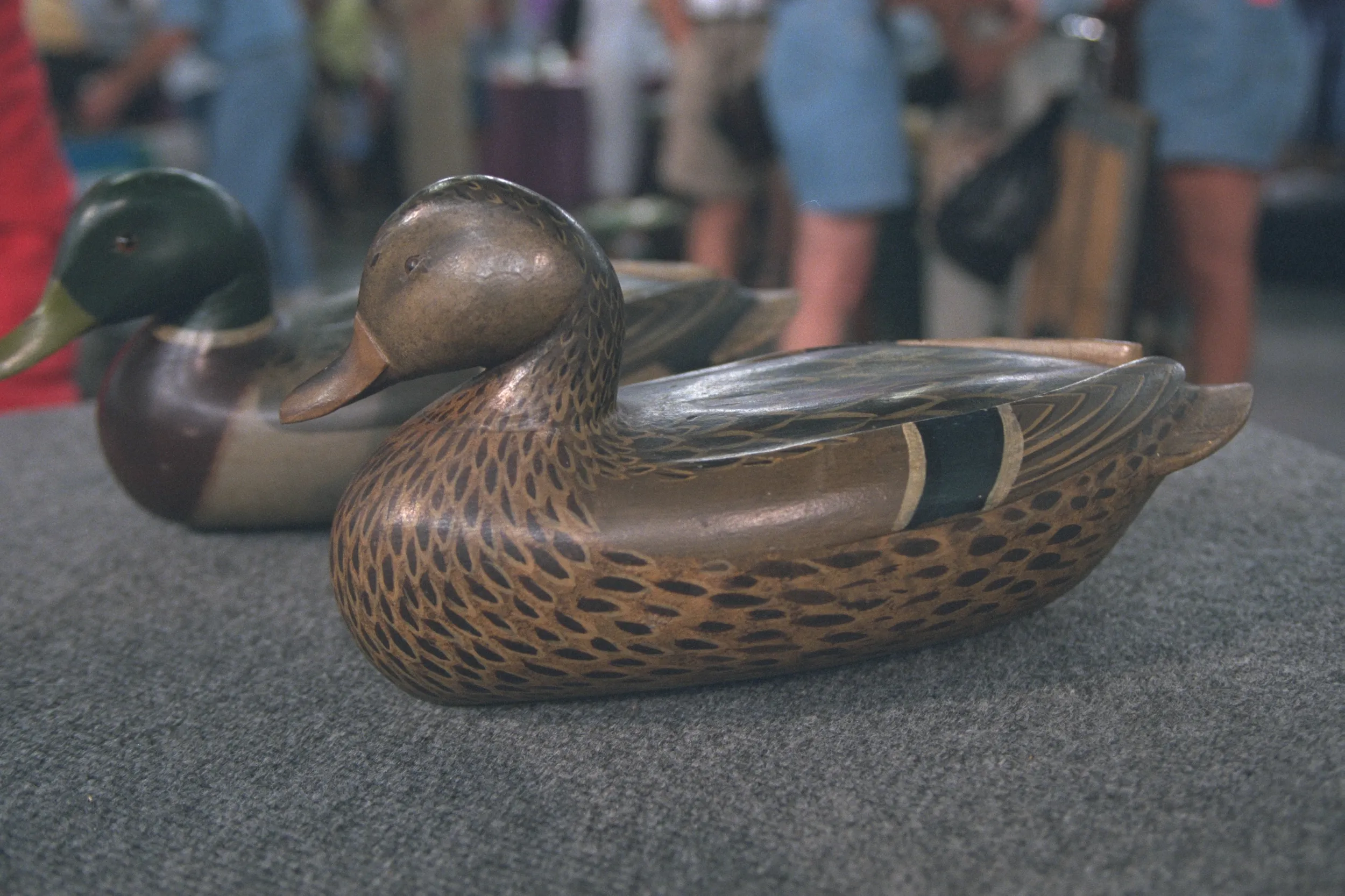GUEST: Well, this belonged to my first cousin-in-law. I'd done some work on one of his buildings to repair it in trade for the sculpture. It's been in the area since probably the early '50s, around '52, where some Mexicans had broke down outside of Phil Campbell and sold this to Grady Fuller, who owned a store across from where they broke down from.
APPRAISER: I see. Well, what this is supposed to be is a piece from Nayarit, Mexico. I bought one of these pieces many years ago, and it cost me a lot of money and a lot of grief. And so I've tried to learn a lesson from it and going to try to pass it on to you. Nayarit culture made these things between about 200 BC and 200 A.D. The real Nayarit pieces, however, are a little different. The first thing-- the facial expressions are not correct. For this culture, the nose would've been different, the mouth, especially, would've been different, and these little ear spools, they would've been different on the ear. The second thing is the surface. Generally, these pieces had either a real shiny red surface without all this modeling, and the black that you see on here would have been impurities in the clay, but they would've also popped out extremely smooth and shiny, almost like shoe polish. The final thing that really tipped me off: it's extremely heavy. Nayarit pieces are very light. The clay up here in this hole, which let the air out during firing, you'll see it's very thin in the original pieces. If you broke this piece, you'll see a cross-section of the arm, it'll be very black and unfired in the center, because they couldn't get it hot enough. These guys make this stuff just the way they did 2,000 years ago, they just don't finish it as complete. I was driving through Mexico, I bought a piece about 50 miles from Nayarit in about 1972. Great piece, looked fine, until I dropped it and broke it. And then I became very well aware of the problem, and it was almost a ringer for this. This is supposed to be a man playing a flat high drum with a deer horn. As a decorator object, these pieces are pretty desirable. They'll bring $350 to $500 in the decorator shops to go in people's houses. If it was a real 2,000-year-old piece, it would bring $4,000 to $6,000. And I wish it was a $4,000 to $6,000 one, because we haven't seen one that big.
GUEST: I appreciate the info, there, because I needed to know something about it, and that helped me understand a little bit more about it.











